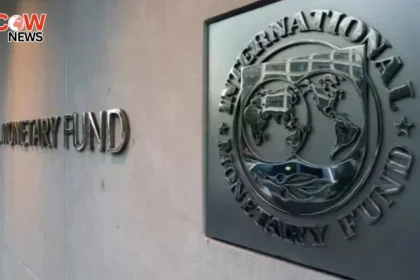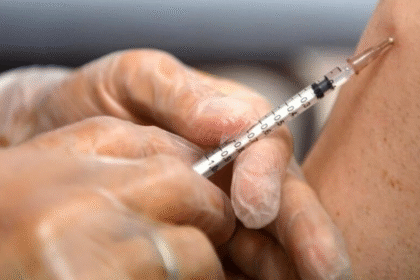The Pakistan Meteorological Department (PMD) has recently forecasted a likely decrease in dengue fever cases by November. This prediction comes amid a challenging environment where dengue has surged in various regions, particularly in Rawalpindi. Officials warn, however, that the next two weeks are crucial, as current atmospheric conditions remain conducive to the continued spread of the virus. The PMD has urged national health agencies and dengue control centers to take immediate preventative measures to mitigate the impact of the disease.
Current Meteorological Conditions
The PMD’s analysis indicates that the climatic conditions typical of the summer months—such as warmth and humidity—have facilitated the breeding of the Aedes aegypti mosquito, the primary vector responsible for dengue transmission. During this time, stagnant water, common in urban settings, becomes a breeding ground for these mosquitoes, leading to increased infection rates.
The meteorological department anticipates that as the weather begins to cool in November, the conditions will likely become less favorable for mosquito reproduction, which could lead to a reduction in cases. However, officials emphasize that this potential decrease hinges on immediate action being taken to address the current outbreak.
Dengue Crisis in Rawalpindi
In Rawalpindi, the dengue outbreak has reached alarming levels, prompting urgent responses from health authorities. Over the past two months, the district has recorded a significant rise in the number of dengue patients, with the death toll increasing to seven. The situation has put immense pressure on local healthcare facilities, which are struggling to manage the growing influx of patients.
In response to the rising case numbers, the Rawalpindi District Health Authority (DHA) has finalized plans to expand the capacity of local healthcare facilities, increasing the number of available beds for dengue patients from 600 to 1,000. This expansion is essential to ensure that the healthcare system can accommodate the increasing number of individuals seeking treatment.
Challenges Faced by Health Authorities
Despite significant efforts and investments in anti-dengue campaigns, including the recruitment of additional medical staff and the allocation of Rs363.2 million, the DHA has encountered difficulties in controlling the outbreak effectively. One major challenge has been the persistence of mosquito breeding sites within the district. Health authorities have struggled to implement consistent and effective measures to eliminate these breeding grounds.
Furthermore, public awareness about dengue prevention remains a critical area of concern. Many residents may not fully understand the importance of removing stagnant water from their surroundings or using repellents to protect themselves from mosquito bites. Education campaigns aimed at informing the community about the risks associated with dengue and the necessary preventative measures are vital.
Community Engagement and Awareness
Health experts emphasize the importance of community involvement in dengue prevention efforts. Engaging local communities in awareness campaigns can significantly reduce mosquito breeding and the incidence of dengue. This engagement can take various forms, such as community clean-up drives to remove stagnant water and workshops to educate residents about preventative measures.
Local governments and health authorities should consider partnering with community leaders and organizations to amplify their outreach efforts. By fostering a sense of collective responsibility, communities can take proactive steps to mitigate the risk of dengue transmission.
Importance of Immediate Action
The PMD’s warning about the critical nature of the next two weeks is particularly pertinent. As atmospheric conditions remain favorable for mosquito breeding, health officials stress the necessity of immediate intervention. If no decisive action is taken during this period, the potential for further escalation of cases could strain an already overwhelmed healthcare system.
Immediate actions that should be prioritized include targeted insecticide spraying in high-risk areas, conducting community clean-up campaigns to eliminate breeding sites, and implementing effective surveillance measures to monitor mosquito populations. Additionally, health officials should encourage residents to adopt personal protective measures, such as using mosquito nets and repellents, especially during peak biting hours.
Government Response and Preparedness
The government’s response to the dengue outbreak is pivotal in determining the overall trajectory of the crisis. Health authorities must prioritize resource allocation to the most affected areas, ensuring that healthcare facilities are well-equipped to manage the increasing number of dengue cases.
In preparation for potential future outbreaks, it is essential for the government to develop comprehensive strategies. This includes investing in research to better understand dengue transmission patterns, enhancing surveillance systems to detect outbreaks early, and improving public health infrastructure to respond more effectively to emerging threats.
Moreover, a robust response plan should involve continuous monitoring and evaluation of the effectiveness of current interventions. By assessing what works and what doesn’t, health authorities can adapt their strategies to better combat dengue and protect public health.
Building Long-term Solutions
While immediate actions are necessary to address the current outbreak, long-term solutions must also be considered. These solutions could include the development of community health initiatives aimed at fostering sustainable practices that prevent mosquito breeding. For instance, regular community clean-up events can instill a sense of responsibility among residents to maintain their environments.
Furthermore, investment in research and development for dengue vaccines and treatments can play a critical role in reducing the burden of the disease. Collaborative efforts with international health organizations and research institutions can facilitate advancements in these areas.
The Role of Technology in Prevention
Advancements in technology can also be leveraged to enhance dengue prevention efforts. For example, mobile applications that educate users about dengue prevention and allow them to report potential breeding sites can empower communities to take proactive measures. Additionally, geographic information systems (GIS) can help health authorities map out areas with high incidences of dengue, allowing for targeted interventions.
Innovative solutions such as the use of genetically modified mosquitoes that reduce the population of disease-carrying mosquitoes are also being explored. These methods, while still under research, show promise for future applications in dengue control.
International Cooperation and Support
Dengue fever is a global health issue, and international cooperation is essential for effective management and prevention. Pakistan can benefit from sharing knowledge and strategies with countries that have successfully controlled dengue outbreaks. Collaborations with international health organizations, such as the World Health Organization (WHO), can provide additional resources and expertise.
Furthermore, engaging in regional dialogues about best practices for dengue prevention can foster a collective approach to tackling the issue. This collaboration can enhance the capacity of health systems across borders to respond to dengue outbreaks effectively.
The Importance of Public Health Education
Public health education plays a crucial role in preventing dengue outbreaks. Comprehensive education campaigns should be tailored to address the specific needs and concerns of different communities. By employing culturally relevant messaging and utilizing various communication channels, health authorities can effectively reach a wider audience.
Schools, local organizations, and community centers can serve as platforms for disseminating information about dengue prevention. Additionally, using social media to spread awareness can engage younger populations who are active on these platforms.
The Path Forward
As the PMD predicts a potential decrease in dengue cases by November, it is imperative that health authorities and communities work together to mitigate the current outbreak. The next two weeks are critical for implementing effective measures to curb the spread of the disease. With a collaborative approach that emphasizes education, community engagement, and targeted interventions, Pakistan can navigate the challenges posed by dengue fever.
Long-term strategies must also be developed to ensure sustained success in preventing future outbreaks. By investing in research, utilizing technology, and fostering international cooperation, the nation can build a robust framework for dengue control that protects public health and enhances community resilience.
#DengueOutbreak #PMD #PublicHealth #Rawalpindi #DenguePrevention #HealthAwareness







